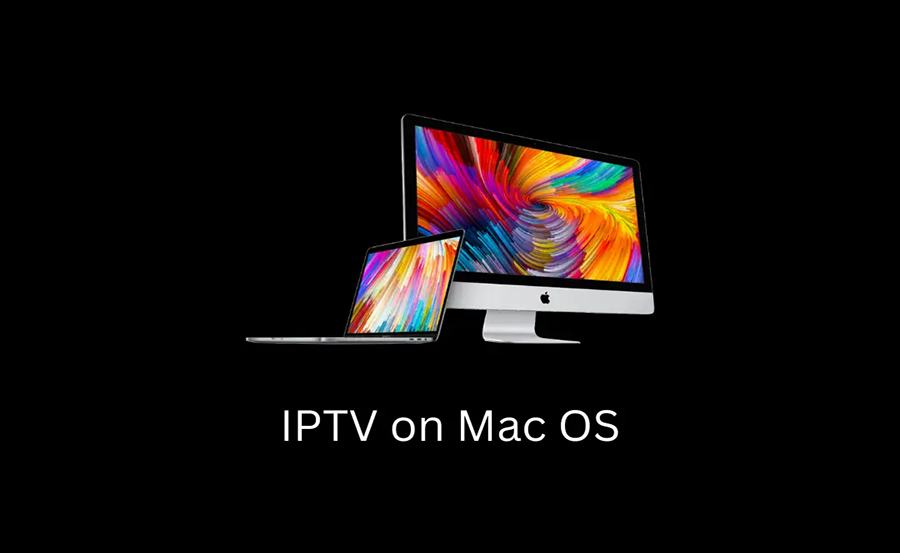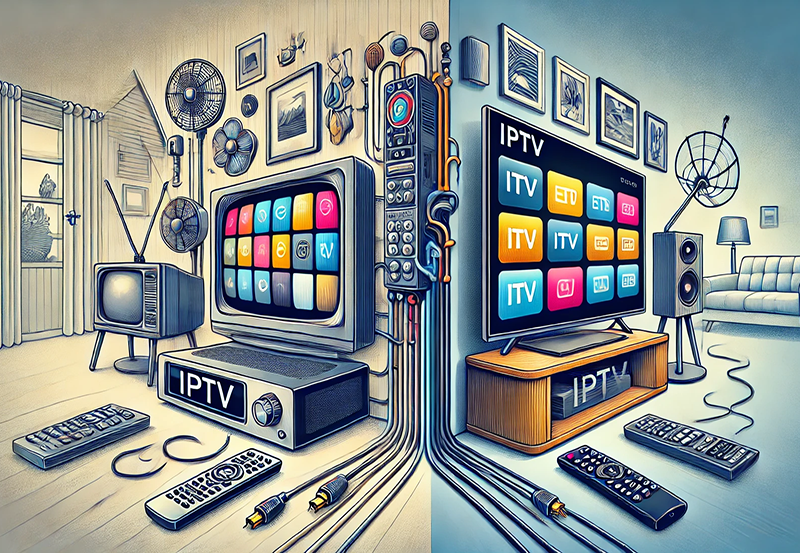As the digital landscape continues to evolve, streaming content has become an integral part of our entertainment lives. The era of traditional cable TV is steadily making way for more flexible, personalized viewing options. IPTV, or Internet Protocol Television, is at the forefront of this change, offering viewers unparalleled control over what they watch. Whether you’re seeking a cost-effective solution or aiming to Enhance Your Viewing Pleasure, IPTV has something for everyone. If you’re new to IPTV and own a Mac, you’re in the right place. This guide will provide you with all the information you need to start your IPTV journey with confidence.
What is IPTV?
IPTV stands for Internet Protocol Television, which is a system where television services are delivered using the Internet protocol suite over a packet-switched network such as the Internet, instead of being delivered through traditional terrestrial, satellite signal, and cable television formats. In other words, IPTV harnesses the power of the internet to stream content directly to your devices.
Unlike traditional broadcasting formats, IPTV offers several advantages. First, it provides greater flexibility in viewing options. Viewers can select what they want to watch, when they want to watch it, and on any compatible device. Additionally, IPTV services often include features such as pause, rewind, and on-demand access to a broad range of content. This level of customization is a huge draw for today’s tech-savvy audience.
Pro Tip:
Stream top-tier entertainment with IPTV USA, offering unmatched access to live TV and on-demand content.
Types of IPTV Services
When exploring IPTV, it’s essential to understand the different types of services available:
- Video on Demand (VOD): This service allows users to watch videos from a central catalog. Think of it like an online video store, where you can choose what you want and watch it at your own pace.
- Live IPTV: This offers live streaming of television programs. It’s similar to watching regular TV but over the internet.
- Time-Shifted Media: Also known as catch-up TV, this allows users to watch previously aired programs on television.
The Growing Popularity of IPTV
The surge in IPTV subscription services can be attributed to several factors. Primarily, the ever-increasing speed and accessibility of internet data allow for smooth streaming experiences that were once impossible. Additionally, as content creators produce more varied content to fit individual tastes, IPTV platforms have grown to accommodate these diverse interests. For beginners, the ability to access niche programming without large cable packages is particularly appealing.
Setting Up IPTV on Your Mac
Getting started with IPTV on your Mac is a straightforward process, but there are a few necessary steps to ensure a smooth setup. Below, you’ll find a step-by-step guide for integrating IPTV services with your Mac device.
Choose a Reliable IPTV Provider
The first step to using IPTV is selecting a provider. Look for IPTV services known for reliability, customer support, and a robust content library. Consider factors such as channel variety, subscription cost, and any additional features that are important to you.
Don’t overlook reading customer reviews and checking the provider’s reputation on tech forums. This type of research will help sidestep potential issues with connection stability or unexpected fees, common complaints among dissatisfied users.
Downloading IPTV Player Software
Once you have chosen a provider, you will need IPTV player software. This software allows your Mac to communicate with the IPTV service. Some popular options for Mac users include VLC Media Player, Kodi, and GSE Smart IPTV. These applications are available on the Mac App Store or directly from the developer’s website.
Each player has its own set of features, so take some time to explore the interface and capabilities to find a good match for your viewing needs. Make sure the software is compatible with the macOS version you are using.
Installing and Configuring the Software
After choosing your IPTV player, download and install the application on your Mac. Most players guide you through the installation process, providing on-screen prompts that are easy to follow. Once installed, you’ll need to configure the player to recognize and stream content from your IPTV subscription.
Typically, this involves inputting the playlist URL provided by your IPTV service. Follow the configuration instructions from both your IPTV provider and the player software to ensure everything is correctly set up. If you encounter issues, refer to user manuals or online resources provided by the IPTV and software companies.
Testing Your Setup
With everything installed and configured, it’s time to test your IPTV setup. Select a channel or a program from your player’s interface and check the streaming quality. Look for clear audio, minimal buffering, and sharp video resolution.
If you encounter buffering, consider checking your internet connection speed or consulting troubleshooting guides specific to your IPTV player. A few minutes spent here can save you a lot of frustration later on.
Enhancing Your Viewing Pleasure
Once your setup is operational, it’s time to personalize and make the most of your IPTV experience. Enhanced viewing pleasure comes from leveraging features and optimizing the settings that most users overlook.
Customizing Channels and Favorites
Most IPTV services allow users to create a list of favorite channels. This feature simplifies navigation, allowing you to access your preferred content quickly. Take some time to go through available channels, and add those you frequently watch to your favorites list.
Additionally, many services offer customizable channel guides. Arrange the order and grouping of channels to suit your viewing habits. This personalized setup provides a more intuitive and enjoyable user experience.
Streaming Quality and Internet Speed
Streaming relies heavily on a stable and fast internet connection. If you wish to enhance your viewing pleasure, ensure your network speed supports the resolution of the content you are watching. For high-definition content, an internet speed of at least 10 Mbps is recommended.
You might also explore setting up a dedicated IPTV streaming network using Quality of Service (QoS) settings on your router. This prioritizes streaming traffic and can significantly reduce lagging and buffering during peak hours.
Utilizing Parallel Content Viewing
Some IPTV services allow simultaneous viewing on multiple devices. Whether you’re planning to stream on a mobile device while traveling or set up another Mac in a different room, verify your subscription package for any device limitations.
Make the most of the available content by using this functionality wisely, sharing access with family members or roommates without interfering with each other’s viewing experiences.
Common Challenges and Solutions
While the appeal of IPTV is strong, navigating the initial learning curve may present a few challenges. Knowing common obstacles and their solutions can streamline your IPTV experience and ensure sustained enjoyment.
Legal and Security Considerations
IPTV services often raise questions about legality and content rights. Ensure the IPTV provider you choose is legitimate and operates within the bounds of the broadcasting laws applicable to your location. Using legal services protects you from potential fines and provides a more secure user experience.
Security should also be a focus; protect your Mac with antivirus software and regularly update all installed programs. Consider using a Virtual Private Network (VPN) when accessing your IPTV content to shield your data from unwanted surveillance or threats.
Overcoming Technical Hurdles
Technical issues, especially with technology like IPTV, are almost inevitable. Buffering, poor image quality, and intermittent connections are among the most common. To combat these, ensure your Mac system is updated and check for any newer versions of your IPTV player.
If issues persist, reboot your internet modem, adjust your local firewall settings, or switch to an alternate server or channel. If a technical problem remains unsolved, the diverse online community of IPTV users and forums can be a valuable resource.
Subscription Renewal and Management
Managing your IPTV subscription effectively can avoid service interruptions. Note the renewal dates of your subscriptions and set an alert a few days in advance to handle renewals without service disruption. Many providers offer automated renewal options, but it’s always wise to double-check, especially if you need to update your payment method.
Alongside regular subscription management, periodically review your needs. Are there channels you no longer watch? Are there additional features, such as sports packages or on-demand access, that would enhance your viewing experience?
Frequently Asked Questions (FAQs)

Do I need a fast internet connection for IPTV on Mac?
Yes, a stable and fast internet connection is critical for IPTV streaming. A minimum speed of 10 Mbps is recommended for uninterrupted viewing of high-definition content.
Can I use IPTV on multiple devices simultaneously?
Many IPTV services allow streaming on multiple devices at the same time. However, the number of devices depends on your specific subscription package, so it’s wise to check your provider’s guidelines.
What should I do if my IPTV stream keeps buffering?
Buffering can be frustrating. Consider troubleshooting steps such as checking your internet speed, rebooting your router, or closing other bandwidth-heavy applications running on your network.
Is IPTV legal to use?
IPTV is legal if you are subscribed to channels and services that have obtained proper broadcasting rights. Ensure you choose a reputable provider that complies with local content laws.
How do I choose the best IPTV subscription?
Choosing the best subscription involves evaluating factors like channel selection, pricing, customer reviews, and additional features. Research different providers to find the best match for your viewing needs and budget.
What are the benefits of using a VPN with IPTV?
A VPN enhances your online privacy by encrypting your internet traffic. It also helps in accessing geographically restricted content, providing a more secure IPTV viewing experience.
How to Install & Use AppLinked APK on FireStick





